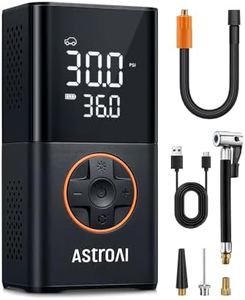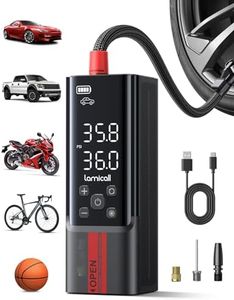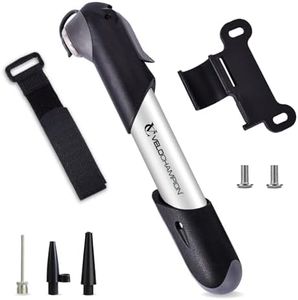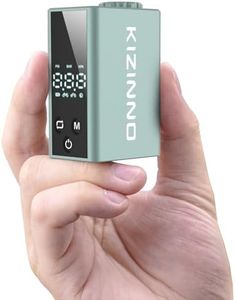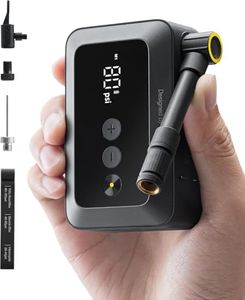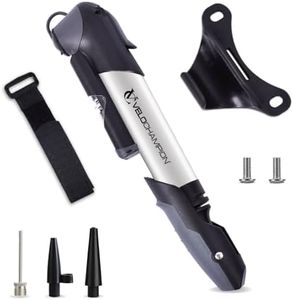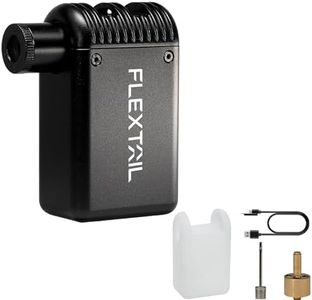We Use CookiesWe use cookies to enhance the security, performance,
functionality and for analytical and promotional activities. By continuing to browse this site you
are agreeing to our privacy policy
10 Best Portable Bicycle Pump
From leading brands and best sellers available on the web.Buying Guide for the Best Portable Bicycle Pump
Choosing the right portable bicycle pump ensures that you have a reliable way to inflate your tires while on the go, whether you’re commuting, touring, or riding trails. It’s important to find a balance between portability, efficiency, and ease of use. Knowing what features matter most for your riding style will help you make a smart decision that keeps your tires rolling smoothly and avoids unnecessary stress when you need to pump up.Pump TypePortable bicycle pumps generally come in two main types: hand pumps and CO2 inflators. Hand pumps require manual effort and can be used as many times as needed since they don’t need cartridges or extra components. CO2 inflators use compressed gas cartridges for rapid inflation, but you’ll need to carry spare cartridges and learn correct usage. Choose hand pumps if you want reliability and unlimited use; CO2 inflators are better if you prioritize speed and convenience, especially for emergencies or races.
Valve CompatibilityBicycle tires use different types of valves, mainly Presta and Schrader. A good portable pump should either be compatible with both types or provide an adapter. Check what valve your bike has first, as trying to inflate with an incompatible pump can be frustrating and ineffective. For riders who own multiple bikes or switch between bikes, pumps with dual compatibility offer the most flexibility and convenience.
Maximum Pressure (PSI/Bar)The maximum pressure a pump can reach impacts the kind of tires you can inflate properly. Road bikes often need higher pressures (up to 120 PSI or more), while mountain or hybrid bikes require much less. Pumps are typically grouped into low-pressure (up to 60 PSI), mid-range (up to 100 PSI), and high-pressure (120 PSI and above). Match the pump’s maximum pressure with your tire requirements: road cyclists need higher PSI, while mountain bikers can opt for lower maximums.
Size and WeightSince these pumps are designed to be carried as you ride, their size and weight matter. Smaller, lighter pumps tuck easily into pockets or attach to frames without weighing you down, but they may require more strokes to reach the desired pressure. Larger pumps are easier and faster to use but add bulk. Think about your own priorities—if you want something you’ll barely notice, go for the most compact, but if ease of inflation is critical, size up a bit.
Ease of Use and ErgonomicsHandling and usability determine how quickly and comfortably you can inflate your tires. Look for comfortable grips, stable bases, and easy-to-read gauges if possible. Some pumps are designed for two-handed use or with features that make pumping less tiring. If you have smaller hands or less upper body strength, user-friendly features can make a big difference during roadside repairs.
Mounting OptionsMany portable pumps have mounts that let you attach them directly to your bike frame, usually under the water bottle cage. This keeps the pump with you but doesn’t take up valuable space in your pocket or bag. Consider whether you’re willing to spare space on your frame or prefer to carry the pump separately. Compatibility with your bike frame and ease of removing the pump when needed should guide you here.


